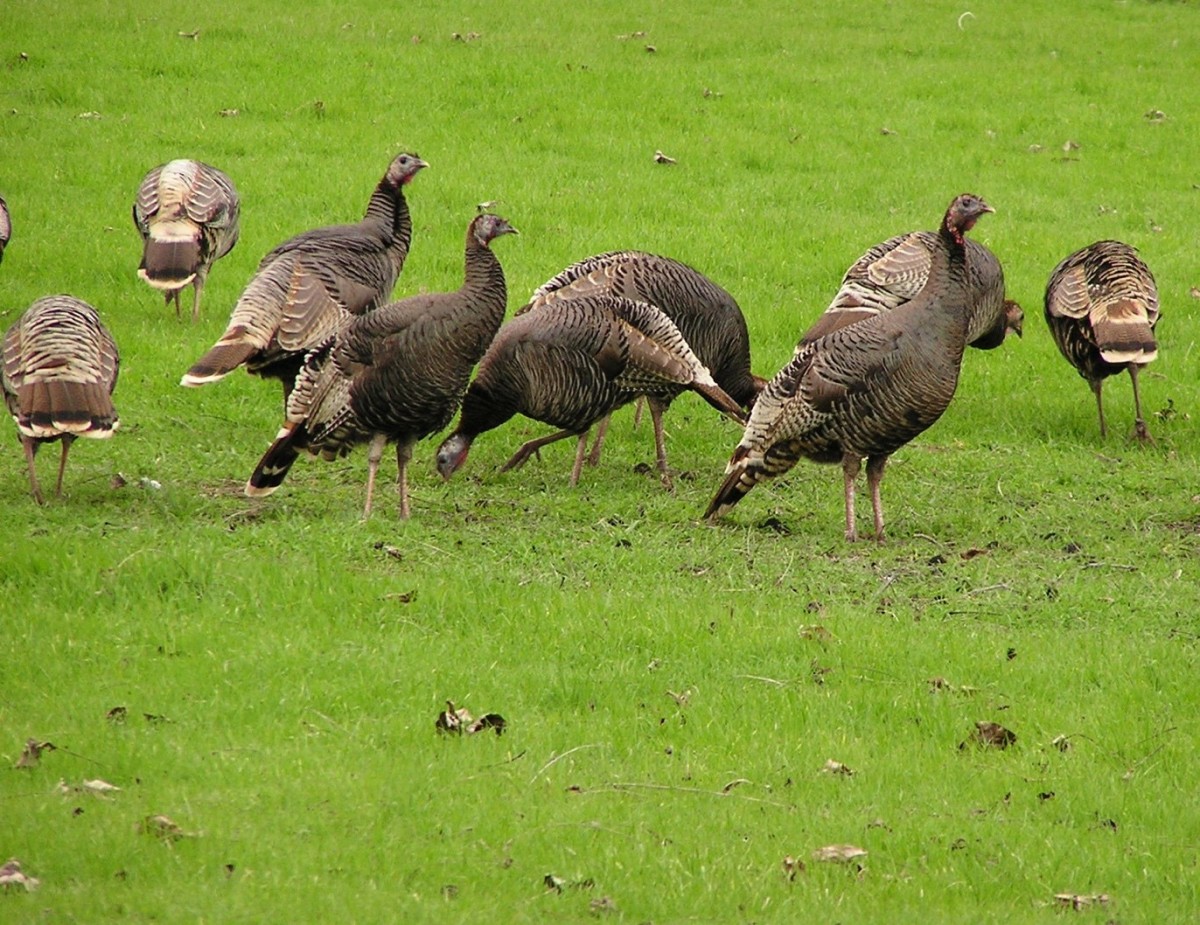
Back between 1900 and 1950, thousands of farm-raised turkeys were introduced into California wildlands by the State Fish and Game Commission with a goal to provide sport for hunters. The turkeys only managed to survive at marginal levels in most areas. So between 1959 and 1999, the California State Department of Fish and Game paid to have thousands of live-trapped wild turkeys – mostly from Texas – transported to California and released at sites scattered around the State. The wild birds adapted well – so well that the wild turkey population has grown expansively in many areas of the State, including across the foothills and lower forests of our local region.
In the past few years, populations of turkeys have become well established in neighborhoods throughout the local region. Near Twain Harte, a few hen turkeys wandered around one neighborhood periodically a few years ago. Then the individual hen turkeys could be seen with up to 9 or 10 chicks each. After a couple of years, flocks of 15 adult birds were sauntering through yards, with different flocks moving through a few minutes apart.
CSERC staff observed a flock of more than 60 turkeys as they spread across an open field, pecking and feeding as they moved through the grasses. Wild turkeys have clearly become more common - often in flocks that are larger than those seen 20 or 30 years ago. In a single day recently, one CSERC staff member saw wild turkeys near Twain Harte, more turkeys near Soulsbyville, and more turkeys over near New Melones Reservoir.
California State Fish and Wildlife representatives acknowledge that the state’s turkey population “is healthy and growing.” Wildlife officials also acknowledge that turkeys can be pests at times, especially if people choose to feed them. The birds can damage landscaping plants or gardens, defecate heavily on decks or lawns, and become quite tolerant of people attempting to scare them away. A state website notes: “Adult wild turkeys, which can weigh upwards of 20 pounds, can… ...become aggressive during the breeding season, occasionally even charging, threatening, and acting aggressively toward people.”
After reading this advice from our State wildlife agency CSERC staff thought it worth sharing: “If confronted by a wild turkey that has lost its fear of humans, an open umbrella may help steer it out of your path.”
Some of you reading this article may wonder, “So who carries an umbrella around with them?” Obviously, now that you are “in the know,” you will want to carry an umbrella or two with you while walking in wild turkey habitat (almost any place located below higher elevations, where snow becomes too deep). For those of you who venture outdoors without your turkey defense umbrella, you have been forewarned.
On a more serious note, there are numerous articles of concern about the effects of wild turkeys in areas where their populations are increasing in the State. Turkeys do eat lizards, small amphibians, and many kinds of plants, so some have voiced alarm that soaring turkey numbers could affect plant and animal species consumed by the turkeys. To date, however, the limited studies on turkey impacts that have been published do not conclusively label wild turkeys as causing any significant harm.
However, keeping them wild is a theme promoted by wildlife officials. One key caution shared by various state wildlife agency sites is the recommendation NOT to feed wild turkeys. Not only will it unnaturally boost the survival of turkeys, but it conditions the birds to be highly tolerant of humans.
For some, simply seeing large wild birds like turkeys in their neighborhood is a fun experience and worth some smartphone photos. Others fear that wild turkeys, like many non-native, introduced species, may end up becoming out-of-control pests at a statewide scale. It may well be that two different people in a particular foothill or forest neighborhood may see the same flock of turkeys and view them with completely different perspectives – either as enjoyable wildlife to view, or as pests that may pose risk to our region’s native ecosystem. Some may believe that they are both of the above.


